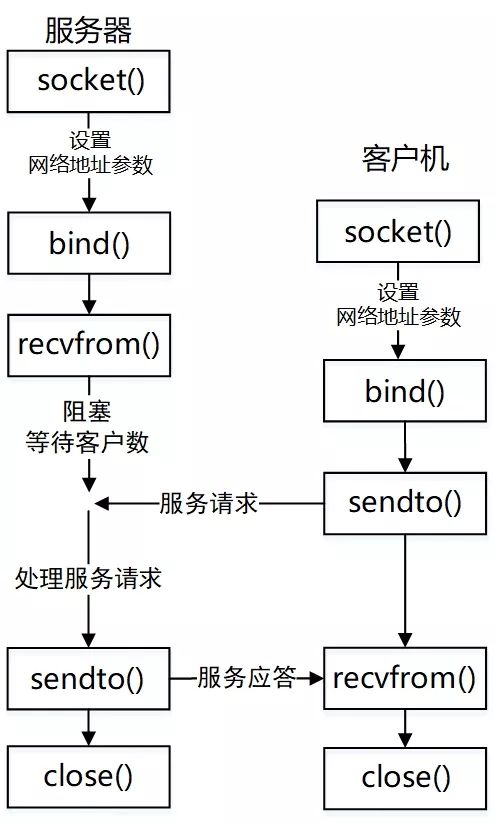Python 編程中常用的12 種基礎(chǔ)知識(shí)總結(jié):正則表達(dá)式替換,遍歷目錄方法,列表按列排序、去重,字典排序,字典、列表、字符串互轉(zhuǎn),時(shí)間對(duì)象操作,命令行參數(shù)解析(getopt),print 格式化輸出,進(jìn)制轉(zhuǎn)換,python 調(diào)用系統(tǒng)命令或者腳本,Python 讀寫文件。
?
1、正則表達(dá)式替換
目標(biāo): 將字符串 line 中的 overview.gif 替換成其他字符串

注意: 其中 1 是匹配到的數(shù)據(jù),可以通過這樣的方式直接引用
2、遍歷目錄方法
在某些時(shí)候,我們需要遍歷某個(gè)目錄找出特定的文件列表,可以通過os.walk方法來(lái)遍歷,非常方便
import os
fileList = []
rootdir = "/data"
for root, subFolders, files in os.walk(rootdir):
if '.svn' in subFolders: subFolders.remove('.svn') # 排除特定目錄
for file in files:
if file.find(".t2t") != -1:# 查找特定擴(kuò)展名的文件
file_dir_path = os.path.join(root,file)
fileList.append(file_dir_path)
print fileList
3、列表按列排序(list sort)
如果列表的每個(gè)元素都是一個(gè)元組(tuple),我們要根據(jù)元組的某列來(lái)排序的化,可參考如下方法
下面例子我們是根據(jù)元組的第2列和第3列數(shù)據(jù)來(lái)排序的,而且是倒序(reverse=True)
>>> a = [('2011-03-17', '2.26', 6429600, '0.0'), ('2011-03-16', '2.26', 12036900, '-3.0'),
('2011-03-15', '2.33', 15615500,'-19.1')]
>>> print a[0][0]
2011-03-17
>>> b = sorted(a, key=lambda result: result[1],reverse=True)
>>> print b
[('2011-03-15', '2.33', 15615500, '-19.1'), ('2011-03-17', '2.26', 6429600, '0.0'),
('2011-03-16', '2.26', 12036900, '-3.0')]
>>> c = sorted(a, key=lambda result: result[2],reverse=True)
>>> print c
[('2011-03-15', '2.33', 15615500, '-19.1'), ('2011-03-16', '2.26', 12036900, '-3.0'),
('2011-03-17', '2.26', 6429600, '0.0')]
4、列表去重(list uniq)
有時(shí)候需要將list中重復(fù)的元素刪除,就要使用如下方法
>>> lst= [(1,'sss'),(2,'fsdf'),(1,'sss'),(3,'fd')]
>>> set(lst)
set([(2, 'fsdf'), (3, 'fd'), (1, 'sss')])
>>>
>>> lst = [1, 1, 3, 4, 4, 5, 6, 7, 6]
>>> set(lst)
set([1, 3, 4, 5, 6, 7])
5、字典排序(dict sort)
一般來(lái)說,我們都是根據(jù)字典的key來(lái)進(jìn)行排序,但是我們?nèi)绻敫鶕?jù)字典的value值來(lái)排序,就使用如下方法
>>> from operator import itemgetter
>>> aa = {"a":"1","sss":"2","ffdf":'5',"ffff2":'3'}
>>> sort_aa = sorted(aa.items(),key=itemgetter(1))
>>> sort_aa
[('a', '1'), ('sss', '2'), ('ffff2', '3'), ('ffdf', '5')]
從上面的運(yùn)行結(jié)果看到,按照字典的value值進(jìn)行排序的
6、字典,列表,字符串互轉(zhuǎn)
以下是生成數(shù)據(jù)庫(kù)連接字符串,從字典轉(zhuǎn)換到字符串
>>> params = {"server":"mpilgrim", "database":"master", "uid":"sa", "pwd":"secret"}
>>> ["%s=%s" % (k, v) for k, v in params.items()]
['server=mpilgrim', 'uid=sa', 'database=master', 'pwd=secret']
>>> ";".join(["%s=%s" % (k, v) for k, v in params.items()])
'server=mpilgrim;uid=sa;database=master;pwd=secret'
下面的例子 是將字符串轉(zhuǎn)化為字典
>>> a = 'server=mpilgrim;uid=sa;database=master;pwd=secret'
>>> aa = {}
>>> for i in a.split(';'):aa[i.split('=',1)[0]] = i.split('=',1)[1]
...
>>> aa
{'pwd': 'secret', 'database': 'master', 'uid': 'sa', 'server': 'mpilgrim'}
7、時(shí)間對(duì)象操作
將時(shí)間對(duì)象轉(zhuǎn)換成字符串
>>> import datetime
>>> datetime.datetime.now().strftime("%Y-%m-%d %H:%M")
'2011-01-20 14:05'
時(shí)間大小比較
>>> import time
>>> t1 = time.strptime('2011-01-20 14:05',"%Y-%m-%d %H:%M")
>>> t2 = time.strptime('2011-01-20 16:05',"%Y-%m-%d %H:%M")
>>> t1 > t2
False
>>> t1 < t2
True
時(shí)間差值計(jì)算,計(jì)算8小時(shí)前的時(shí)間
>>> datetime.datetime.now().strftime("%Y-%m-%d %H:%M")
'2011-01-20 15:02'
>>> (datetime.datetime.now() - datetime.timedelta(hours=8)).strftime("%Y-%m-%d %H:%M")
'2011-01-20 07:03'
將字符串轉(zhuǎn)換成時(shí)間對(duì)象
>>> endtime=datetime.datetime.strptime('20100701',"%Y%m%d")
>>> type(endtime)
>>> print endtime
2010-07-01 00:00:00
將從 1970-01-01 00:00:00 UTC 到現(xiàn)在的秒數(shù),格式化輸出
>>> import time
>>> a = 1302153828
>>> time.strftime("%Y-%m-%d %H:%M:%S",time.localtime(a))
'2011-04-07 13:23:48'
8、命令行參數(shù)解析(getopt)
通常在編寫一些日運(yùn)維腳本時(shí),需要根據(jù)不同的條件,輸入不同的命令行選項(xiàng)來(lái)實(shí)現(xiàn)不同的功能 在Python中提供了getopt模塊很好的實(shí)現(xiàn)了命令行參數(shù)的解析,下面距離說明。請(qǐng)看如下程序:
#!/usr/bin/env python
# -*- coding: utf-8 -*-
import sys,os,getopt
def usage():
print '''''
Usage: analyse_stock.py [options...]
Options:
-e : Exchange Name
-c : User-Defined Category Name
-f : Read stock info from file and save to db
-d : delete from db by stock code
-n : stock name
-s : stock code
-h : this help info
test.py -s haha -n "HA Ha"
'''
try:
opts, args = getopt.getopt(sys.argv[1:],'he:c:f:d:n:s:')
except getopt.GetoptError:
usage()
sys.exit()
if len(opts) == 0:
usage()
sys.exit()
for opt, arg in opts:
if opt in ('-h', '--help'):
usage()
sys.exit()
elif opt == '-d':
print "del stock %s" % arg
elif opt == '-f':
print "read file %s" % arg
elif opt == '-c':
print "user-defined %s " % arg
elif opt == '-e':
print "Exchange Name %s" % arg
elif opt == '-s':
print "Stock code %s" % arg
elif opt == '-n':
print "Stock name %s" % arg
sys.exit()
9、print 格式化輸出
9.1、格式化輸出字符串
截取字符串輸出,下面例子將只輸出字符串的前3個(gè)字母
>>> str="abcdefg"
>>> print "%.3s" % str
abc
按固定寬度輸出,不足使用空格補(bǔ)全,下面例子輸出寬度為10
>>> str="abcdefg"
>>> print "%10s" % str
abcdefg
截取字符串,按照固定寬度輸出
>>> str="abcdefg"
>>> print "%10.3s" % str
abc
浮點(diǎn)類型數(shù)據(jù)位數(shù)保留
>>> import fpformat
>>> a= 0.0030000000005
>>> b=fpformat.fix(a,6)
>>> print b
0.003000
對(duì)浮點(diǎn)數(shù)四舍五入,主要使用到round函數(shù)
>>> from decimal import *
>>> a ="2.26"
>>> b ="2.29"
>>> c = Decimal(a) - Decimal(b)
>>> print c
-0.03
>>> c / Decimal(a) * 100
Decimal('-1.327433628318584070796460177')
>>> Decimal(str(round(c / Decimal(a) * 100, 2)))
Decimal('-1.33')
9.2、進(jìn)制轉(zhuǎn)換
有些時(shí)候需要作不同進(jìn)制轉(zhuǎn)換,可以參考下面的例子(%x 十六進(jìn)制,%d 十進(jìn)制,%o 八進(jìn)制)
>>> num = 10
>>> print "Hex = %x,Dec = %d,Oct = %o" %(num,num,num)
Hex = a,Dec = 10,Oct = 12
10、Python調(diào)用系統(tǒng)命令或者腳本
使用 os.system() 調(diào)用系統(tǒng)命令 , 程序中無(wú)法獲得到輸出和返回值
>>> import os
>>> os.system('ls -l /proc/cpuinfo')
>>> os.system("ls -l /proc/cpuinfo")
-r--r--r-- 1 root root 0 3月 29 16:53 /proc/cpuinfo
0
使用 os.popen() 調(diào)用系統(tǒng)命令, 程序中可以獲得命令輸出,但是不能得到執(zhí)行的返回值
>>> out = os.popen("ls -l /proc/cpuinfo")
>>> print out.read()
-r--r--r-- 1 root root 0 3月 29 16:59 /proc/cpuinfo
使用 commands.getstatusoutput() 調(diào)用系統(tǒng)命令, 程序中可以獲得命令輸出和執(zhí)行的返回值
>>> import commands
>>> commands.getstatusoutput('ls /bin/ls')
(0, '/bin/ls')
11、Python 捕獲用戶 Ctrl+C ,Ctrl+D 事件
有些時(shí)候,需要在程序中捕獲用戶鍵盤事件,比如ctrl+c退出,這樣可以更好的安全退出程序
try:
do_some_func()
except KeyboardInterrupt:
print "User Press Ctrl+C,Exit"
except EOFError:
print "User Press Ctrl+D,Exit"
12、Python 讀寫文件
一次性讀入文件到列表,速度較快,適用文件比較小的情況下
track_file = "track_stock.conf"
fd = open(track_file)
content_list = fd.readlines()
fd.close()
for line in content_list:
print line
逐行讀入,速度較慢,適用沒有足夠內(nèi)存讀取整個(gè)文件(文件太大)
fd = open(file_path)
fd.seek(0)
title = fd.readline()
keyword = fd.readline()
uuid = fd.readline()
fd.close()
寫文件 write 與 writelines 的區(qū)別
Fd.write(str) : 把str寫到文件中,write()并不會(huì)在str后加上一個(gè)換行符
Fd.writelines(content) : 把content的內(nèi)容全部寫到文件中,原樣寫入,不會(huì)在每行后面加上任何東西
 電子發(fā)燒友App
電子發(fā)燒友App





















評(píng)論